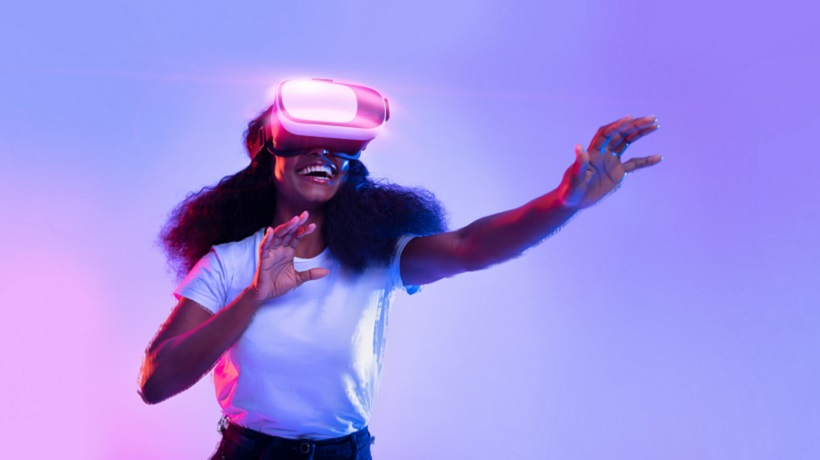7 Tips for Creating Memorable Learning Experiences
Have you ever heard of the "peak-end rule"? It’s a learning theory that explains why a lot of training results in poor knowledge retention. It hypothesizes that, since the brain gets overwhelmed during long periods of attention and processing, it tends to focus on peaks in the process and the end of the experience. If you’ve ever sat through hours-long training and can only remember a small portion of what you learned, you might have fallen victim to the peak-end rule. And, if you’ve ever felt like your organization’s training has resulted in a less-than-stellar ROI, the peak-end rule could help you pinpoint where it went wrong.
Don’t blame the brain. What seems like a roadblock to learning is actually the hyperefficient way that your mind sifts through information. It has a finite amount of processing power, which means it cherry-picks what to retain and what to discard. The trick for creating memorable learning is to design training that tells the brain exactly what to keep. If you know how to direct focus and highlight what’s important, you can create content that the brain views as vital. These seven memorable design tips can help you build peaks and end strong to increase knowledge retention.
7 Memorable Design Tips To Help Increase Knowledge Retention
1. Choose The Right Design Model
Before you start designing your content, you need to choose the right design model. Design models like ADDIE and SAM are essentially blueprints for how you’ll design your learning experience. Choosing the right design model will guide the way you create content and think about the journey from your learner’s point of view. Whether you choose a quicker iterative model like SAM that evolves with implementation and deployment, or you test and adjust your design before launch with ADDIE, a design model will help you map out the best way to deliver content to your audience. With a plan in mind, you can focus more on the memorable details, where to fit the peaks, and how to create an unforgettable ending.
2. Focus On User Experience
User Experience (UX) refers to the way your learners interact with your content. A good User Experience is one where users feel comfortable with what they're doing and enjoy the process, but that’s often easier said than done. User Experience positively contributes to memorable learning by eliciting an emotional connection between the learner and the material. User Experience can mean anything from platform compatibility to designing interactions with the content. When you focus on User Experience, you seek to connect with the learner, guide the process seamlessly, and support the learning journey all the way through the end.
3. Stay Uniquely On-Brand
If you want your learners to stay focused and remember your training, unique branding is key. We don’t necessarily mean making sure your logo is on each page; rather, staying uniquely on-brand means creating learning experiences that feel relevant and consistent to the learner. Utilize familiar colors, fonts, images, and other elements that reflect your organization so learners’ brains know when to pay attention. Direct focus with compelling visuals, skip walls of text to keep attention high, and use the right tone for the content. Create unique scenarios and tell stories about your organization along the way. Staying true to your brand, the content tone, and your organization’s story may mean investing in custom eLearning solutions rather than using off-the-shelf training, but when it comes to retention, you’ll see the ROI almost immediately.
4. Focus On Accessibility
Maya Angelou said, "I’ve learned that people will forget what you said, people will forget what you did, but people will never forget how you made them feel." Obviously, this could be applied to the emotional connection you create between the learner and the training, but we believe that it could also be said about accessibility. When learning is inaccessible or lacks diversity, you might be negatively affecting the learner experience. What message are you sending about your content, and how does that affect retention? If learning only depicts a certain type of employee, or is inaccessible to learners of different abilities, you’re suggesting that the learning is only important for those that can "see" themselves in the training. By making learning diverse and accessible, you’re delivering the message that the training is relevant to everyone.
5. Get Visual
Generally speaking, the more senses you engage with your design, the more likely the brain is to recall the information later. Simply reading something on a page doesn’t engage the brain, and it may result in a lack of retention. Reading something on a page combined with a great visual, a lively audio voice-over, and a tactile response? Instant memory-maker. Combining as many senses as possible helps limit shallow processing. That’s when your brain receives the information, but doesn’t really commit it to memory. When you engage sight with sound and touch, you pique your user’s attention to create a peak in memorable learning. Animation, illustration, game elements, and activities all help learners deepen their understanding and increase later recall. But don’t forget to ensure that all the bells and whistles have an alternative for those with differing abilities.
6. Flip The Script
When your brain is exposed to the same thing again and again, it sorts it into a pile of existing knowledge, even if the actual content is something new. The brain expects training to look and sound a certain way, which can result in learners glossing over info in order to get to the end. One way to ensure a memorable design is to flip the script and try something unexpected. It might mean using a fun character or a new storyline to teach a new principle. It could mean challenging current policy, procedures, or assumptions. It might mean utilizing a fresh tone for mandatory training that learners have already experienced in the past. Never underestimate the power of surprise and delight to direct focus and encourage your learners to dig into the content.
7. End Strong
You’ve designed more memorable, emotional, impactful learning by directing focus and creating peaks in the experience. What’s the finisher? The peak-end rule specifically calls out the end of learning as one of the most important factors for retention, so it stands to reason that the end of your learning is just as (if not more) important than the beginning and the body. Give your learners time to process and practice at the end of training. Doing so helps them commit the content to memory as they put their new skills into practice and experience actual behavioral change. Don’t be afraid to challenge your learners. Your training should end in an opportunity to test their memory and knowledge, discuss new principles, and give the brain a chance to recognize the experience as absolutely vital. Make sure to design knowledge checks, discussion questions, and social learning as the end of the training and the beginning of something better than before.
Conclusion
As always, neuroscience combined with learning design creates a neurolearning approach that is unmatched when it comes to activating the brain. Here’s the thing: learning doesn’t happen in a vacuum. Your learners come to the table with past experiences, existing skills, and brains full of memories and knowledge. Your learning design can either clash or cooperate with these factors. To create truly memorable learning, you’ll need to connect with learners in as many ways as possible. No matter what the training, a memorable design offers all learners a unique opportunity to absorb something new and convert it into real change.







![eLearning Industry's Guest Author Article Showcase [May 2023]](https://cdn.elearningindustry.com/wp-content/uploads/2023/05/eLIs-Top-Guest-Author-Articles-May-2023-.jpg)


